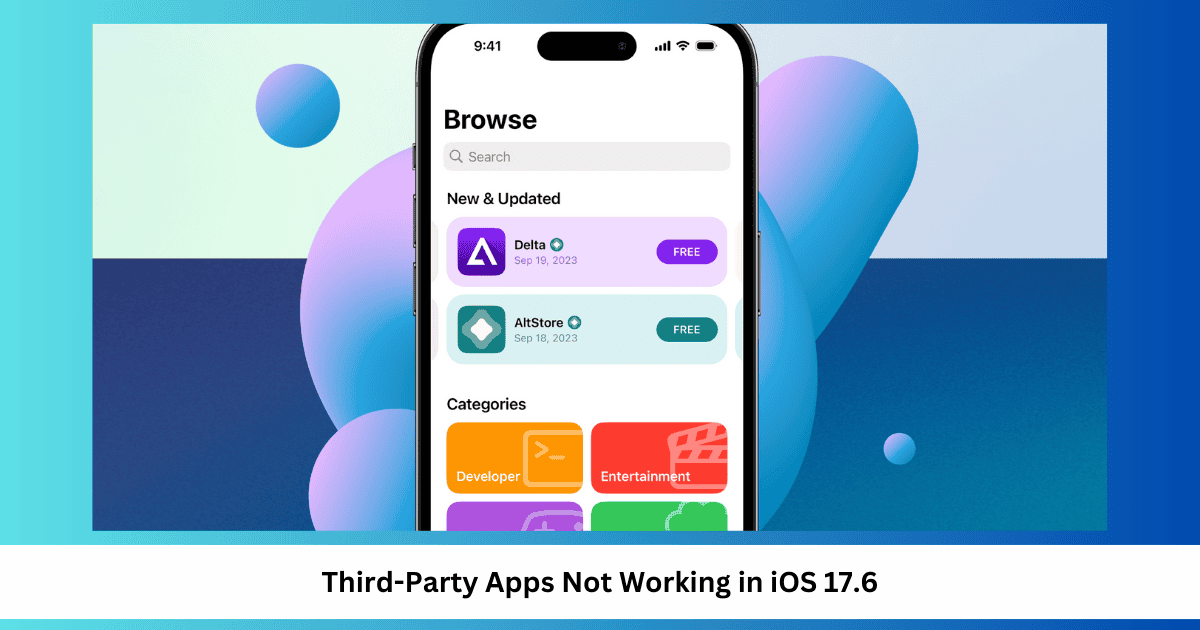Apple only allowed users to (legally) download third-party apps outside of the App Store in 2024, so a few hiccups are inevitable. After upgrading to iOS 17.7, you might find that these apps aren’t working as expected. This can be frustrating, especially if you rely on them for your favorite tools and services.
In this guide, I’ll walk you through the quickest ways to resolve this issue, including some less obvious solutions you might not have considered.
How to Fix Third-Party Apps Not Working After iOS 17.7 Update
1. Delete Any Shortcuts to the App
If updating your software didn’t count, deleting shortcuts to your app might do the job. Removing shortcuts can be confusing if you’ve never previously done this, so here are the instructions you should follow:
- Open the Shortcuts app on your iPhone.
- Select All Shortcuts.

- Press and hold on to the shortcut(s) that you want to remove—a dropdown menu should appear.
- Select Delete.

- When the confirmation window appears, tap Delete Shortcut to finalize your decision.
2. Check for Issues With the App Developer
Apple doesn’t help with non-Apple apps, and you’ll likely be told to delete and re-download the app. This actually can help, but it’s worth trying different things beforehand. Check for issues with your app developer to ensure that everything is fine on their end.
Explain the problem to their customer support team, and check to see if the app’s servers are currently experiencing problems. You should then have a better idea of what to do next.
3. Force Restart Your iPhone
If nothing is wrong with the app’s servers, it’s likely an issue with your iPhone’s software. In many cases, force restarting your device is a helpful next resort. The process is identical on all phones supporting iOS 17:
- Tap one of your volume buttons.
- Quickly let go and tap the other volume button, before again letting go.
- Press and hold the side button.
- Your iPhone will turn off and back on. When the Apple logo appears, let go of the side button.
- Sign in to your device with your passcode.
4. Delete and Re-Download the Third-Party Apps
If you’ve gotten to this point with no success, now is the time to delete and re-download the apps that aren’t working. The steps don’t differ too much compared to if you remove an app downloaded from the App Store; here’s what you need to do.
- Press and hold on to the app you want to remove.
- Select Delete App when you see the pop-up menu.
- Tap Delete App when the confirmation window appears.
- Launch the appropriate app marketplace and re-download the app, based on the usual process for your specific app store.
5. Delete Some of Your Other Apps
One bizarre solution that has worked for some users is to delete some of your other apps. The steps are pretty similar to the previous section, only that you’ll need to re-download your apps from the App Store later.
You can also quickly delete multiple apps on an iPhone in several ways, such as by going to your iPhone’s Settings app.
6. Turn Off Your VPN
While VPNs are great for protecting your identity online, they can also occasionally interfere with other apps and services. This is especially true if you’re trying to use apps that you have downloaded from a third-party app store.
You can turn off your VPN either via your iPhone settings or by going to the specific VPN’s app. First, let’s look at how to switch off your VPN via the Settings app:
- Open the Settings app and go to VPN, which is close to the top of your screen.
- Toggle the VPN feature off.
I normally turn off my VPN via the app, and while I specifically use ExpressVPN, the process is pretty similar across all services. Here’s how to turn off your VPN via the app:
- Open your VPN service’s app.
- Tap the standby button to switch off your VPN.
7. Reset Your iPhone From Before iOS 17.7 and Try Updating Again
Reinstalling a previous version of your iPhone before you downloaded iOS 17.7 and then upgrading directly to iOS 17.7 will probably fix any lingering issues you have with your apps. However, since it’s very time-consuming, this should be an absolute last resort.
Reverting to an older version will also only work if you already backed up your iPhone. If you did, these are the steps you should follow:
- Plug your phone into your computer and navigate to the Finder app.
- Select your iPhone in the left-hand toolbar.
- Go to Backups and select Restore Backup.
- Choose the backup you want to restore your iPhone to. Then, wait for your device to finalize the restoration.
- After your iPhone has been restored to a previous version, go to Settings > General > Software Update and download iOS 17.7.
At least one of these solutions should work if you’re no longer able to access your non-Apple apps, and in most cases, upgrading to iOS 17.7 is all you have to do. More complex solutions, such as force restarting your iPhone and deleting the app before reinstalling, might also work. If worst comes to worst and you still can’t fix the app, it’s worth getting back in touch with the app’s support team.






